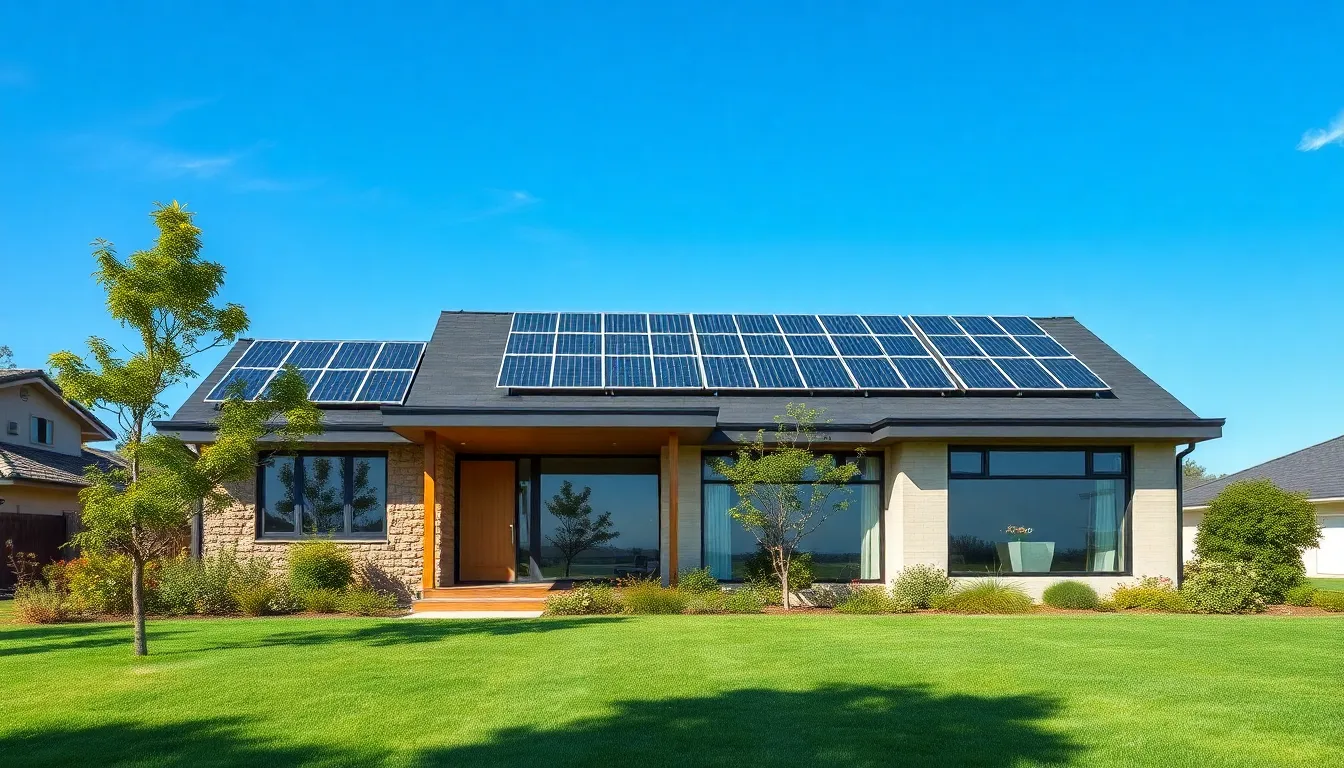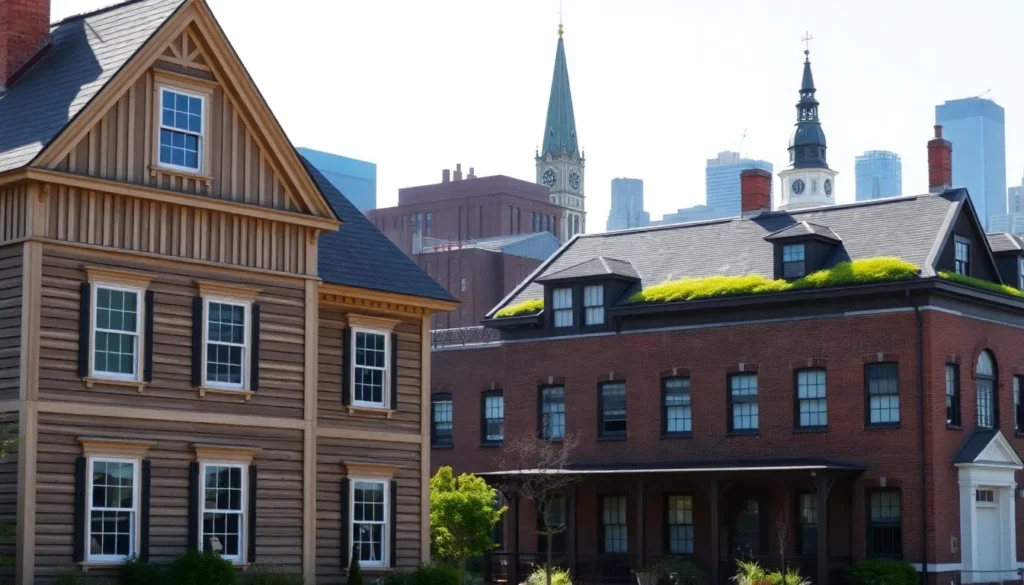Table of Contents
ToggleAs the world grapples with climate change, net-zero home architecture emerges as a beacon of hope. These innovative designs aim to balance energy consumption with renewable energy production, creating homes that generate as much energy as they use. This shift not only reduces carbon footprints but also fosters sustainable living, making it an attractive option for eco-conscious homeowners.
Incorporating advanced materials and energy-efficient technologies, net-zero homes redefine modern living. From solar panels to high-performance insulation, these structures exemplify how architecture can harmonize with nature. As more people seek sustainable solutions, understanding the principles of net-zero design becomes essential for anyone looking to build or renovate their home.
What Is Net-Zero Home Architecture?
Net-zero home architecture refers to the design and construction of residences that produce as much energy as they consume on an annual basis. These homes integrate renewable energy sources, predominantly solar power, effectively minimizing reliance on fossil fuels. Energy efficiency plays a crucial role, employing high-performance insulation, triple-glazed windows, and energy-efficient appliances to reduce overall energy demands.
When focusing on the site, net-zero homes often enhance natural ventilation and daylighting, reducing the need for artificial heating and cooling systems. Advanced building materials and construction techniques contribute to a home’s overall energy performance, ensuring sustainability without sacrificing comfort.
Net-zero homes incorporate energy monitoring systems, allowing homeowners to track usage and optimize energy consumption. This approach not only supports individual sustainability efforts but also contributes to broader environmental goals, fostering a significant reduction in greenhouse gas emissions. By understanding these principles, homeowners can play an active role in combating climate change through effective architectural choices.
Key Principles of Net-Zero Home Design

Net-zero home design revolves around two core principles: energy efficiency and renewable energy sources. These elements ensure homes effectively decrease their carbon footprints while utilizing sustainable practices.
Energy Efficiency
Energy efficiency serves as a cornerstone in net-zero home design. It involves employing building techniques and materials that minimize energy consumption while maintaining comfort. Key strategies include:
- High-Performance Insulation: This standard feature reduces heat loss and gains, allowing homes to maintain consistent indoor temperatures with less energy.
- Natural Ventilation: By strategically placing windows and vents, designs promote airflow, decreasing reliance on mechanical cooling systems.
- Daylighting: Maximizing natural light through windows, skylights, and reflective surfaces decreases the need for electric lighting during daytime hours.
- Smart Technologies: Incorporating smart thermostats and energy management systems enables real-time monitoring of energy use, optimizing consumption patterns.
Effective energy efficiency measures can lead to energy savings of up to 50% compared to traditional homes.
Renewable Energy Sources
Renewable energy sources play a crucial role in achieving net-zero goals. These sources provide sustainable energy solutions that offset the home’s energy consumption. Vital components include:
- Solar Panels: Photovoltaic systems convert sunlight into electricity, significantly reducing dependence on grid energy.
- Solar Water Heating: This technology uses solar energy to heat water for domestic purposes, cutting down on conventional heating energy.
- Wind Turbines: In regions with adequate wind resources, small-scale turbines can supplement energy needs and contribute to grid energy.
- Geothermal Systems: These systems tap into the earth’s thermal energy, providing efficient heating and cooling options.
Utilizing renewable energy sources enables net-zero homes to generate as much energy as they consume on an annual basis, further supporting sustainability initiatives.
Benefits of Net-Zero Homes
Net-zero homes offer significant advantages, particularly in environmental impact and cost savings. These benefits promote sustainable living while enhancing homeowners’ financial stability.
Environmental Impact
Net-zero homes actively reduce greenhouse gas emissions by generating renewable energy. By utilizing solar panels, wind turbines, and geothermal systems, these homes decrease reliance on fossil fuels. The energy-efficient design also minimizes energy waste, leading to less strain on natural resources. This synergistic approach contributes to improved air quality and fosters biodiversity, supporting a healthier ecosystem. As more homeowners adopt net-zero principles, the cumulative effect on climate change mitigation becomes substantial.
Cost Savings
Net-zero homes significantly lower energy bills, offering substantial long-term cost savings. Homeowners can achieve energy savings of up to 50% compared to traditional homes through advanced insulation, efficient appliances, and renewable systems. Though upfront costs for net-zero construction may be higher, incentives and rebates for renewable energy projects often offset these expenses. Additionally, government programs frequently support homeowners investing in energy-efficient upgrades, further reducing financial barriers. As energy prices continue to rise, net-zero homes present a financially prudent choice for future-focused homeowners.
Challenges in Implementing Net-Zero Home Architecture
Implementing net-zero home architecture presents several challenges that can affect homeowners and builders. These challenges include initial investment costs and technology limitations, which play significant roles in the feasibility of constructing net-zero homes.
Initial Investment
Initial investment costs for net-zero homes often exceed those of traditional homes due to advanced materials and energy-efficient technologies. The upfront expenses, including solar panels, high-performance insulation, and energy monitoring systems, typically range from 10% to 20% more than conventional construction. Although long-term savings can balance these initial costs through reduced energy bills—potentially cutting expenses by up to 50%—the high barriers can deter homeowners. Additionally, financing options and incentives may not always be accessible, limiting broader participation in net-zero home projects.
Technology Limitations
Technology limitations present barriers to achieving net-zero status. Current renewable energy technologies, while effective, may not produce sufficient energy in all locations, especially in areas with limited sunlight or harsh weather conditions. Energy storage solutions, such as batteries, can also add complexity, with costs remaining high and efficiency not always optimal. Moreover, not all smart technologies integrate seamlessly, hindering the potential for optimized energy management. As breakthroughs occur in renewable energy and smart home technology, overcoming these limitations becomes essential for expanding net-zero home architecture adoption.
Net-zero home architecture stands as a pivotal advancement in the quest for sustainable living. By embracing energy-efficient designs and renewable technologies, homeowners can significantly reduce their environmental impact while enjoying long-term financial benefits. The journey toward net-zero living may present challenges, but the rewards are substantial—both for individual households and the planet. As awareness and innovation continue to grow, the shift toward net-zero homes is not just a trend; it’s a crucial step toward a more sustainable future. Embracing these principles can empower homeowners to make informed choices that contribute to a healthier environment for generations to come.


